*NURSING > EXAM > National Council of State Boards of Nursing (NCSBON) Exam Practice Questions Latest Real Blueprint F (All)
National Council of State Boards of Nursing (NCSBON) Exam Practice Questions Latest Real Blueprint Full Length Exam with Rationales, Graded 100%
Document Content and Description Below
National Council of State Boards of Nursing (NCSBON) Exam Practice Questions Latest Real Blueprint Full Length Exam with Rationales, Graded 100%,A 2 day-old child with spina bifida and meningomyelocel... e is in the intensive care unit after the initial surgery. As the nurse accompanies the grandparents for a first visit, which response should the nurse anticipate of the grandparents? Disbelief Anger Frustration Depression - 1 The first phase of the grieving process is shock, denial or disbelief. Then follows anger, bargaining, depression and acceptance. Each stage can take any amount of time to work through. Clients often go back and forth between the stages until acceptance is achieved. Some clients may get stuck in any one or two of the stages to never achieve acceptance. A 16 year-old adolescent is admitted for Ewing's sarcoma of the tibia. In discussing the care with the parents, the nurse should understand that the initial treatment for this diagnosis usually includes which approach? Surgical excision of the mass Radiation with adjunctive chemotherapy Amputation above the tumor Bone marrow graft in the affected leg - 2 The initial approach for the treatment of Ewing's sarcoma is usually a combination of radiation and chemotherapy to reduce the size of the tumor. An infant who has recently been diagnosed with cystic fibrosis (CF) is being assessed by the nurse. Which finding of this disease would the nurse not expect to see at this time? Bulky, greasy stools Positive sweat test Moist, productive cough Meconium ileus - 3 Moist and productive cough is a later sign in CF. Noisy respirations and a dry nonproductive cough are commonly the first respiratory signs to appear in a newly diagnosed client with CF. The other options are the earlier findings. CF is an inherited (genetic) condition affecting the cells that produce mucus, sweat, saliva and digestive juices. Normally, these secretions are thin and slippery, but in CF a defective gene causes the secretions to become thick and sticky. Instead of acting as a lubricant, the secretions plug up tubes, ducts and passageways, especially in the pancreas and lungs. Respiratory failure is the most dangerous consequence of CF. The nurse is caring for a client with orders for complete bed rest. Which action by the nurse is most important in the prevention of the formation of deep vein thrombosis (DVT)? Prevent pressure at back of the knees Elevate the foot of the bed Encourage isometric leg muscle exercises Apply knee high support stockings - 1 Prevention of popliteal pressure will minimize venous stasis and deep vein thrombosis. The other actions would also be implemented for clients with orders for bed rest. However, the correct option is the one action directly associated with DVT. Nurse colleagues are discussing their nursing practice during lunch. Which statement is correct? Each state has specific regulations for licensed registered nurses (RNs) and licensed practical nurses (LPNs) The employing agency is ultimately responsible to provide practice guidelines for licensed nurses The federal government ensures the safety of clients by defining the scope of nursing practice National nurses' associations work collaboratively to update the social policy statement for nursing - 1 Boards of nursing are state governmental agencies that are responsible for licensing nurses in each state/jurisdiction and enforcing the rules and regulations of the nurse practice act (NPA). The NPA is enacted by the state legislature. The NPA and rules define the scope of practice and responsibilities for nurses. The scope of practice for nurses, especially LPN/VNs, varies from state to state. A client is admitted with low T3 and T4 levels and an elevated thyroid stimulating hormone (TSH) level. On initial assessment, the nurse should anticipate which of these findings? Lethargy Diarrhea Heat intolerance Skin eruptions - 1 In hypothyroidism the metabolic activity of all cells of the body decreases, reducing oxygen consumption, decreasing oxidation of nutrients for energy, and producing less body heat. Therefore, the nurse can expect the client to report being constipated, tired and unable to get warm. [Show More]
Last updated: 3 months ago
Preview 5 out of 61 pages

Loading document previews ...
Buy this document to get the full access instantly
Instant Download Access after purchase
Buy NowInstant download
We Accept:

Reviews( 0 )
$14.50
Can't find what you want? Try our AI powered Search
Document information
Connected school, study & course
About the document
Uploaded On
Mar 11, 2025
Number of pages
61
Written in
Additional information
This document has been written for:
Uploaded
Mar 11, 2025
Downloads
0
Views
19

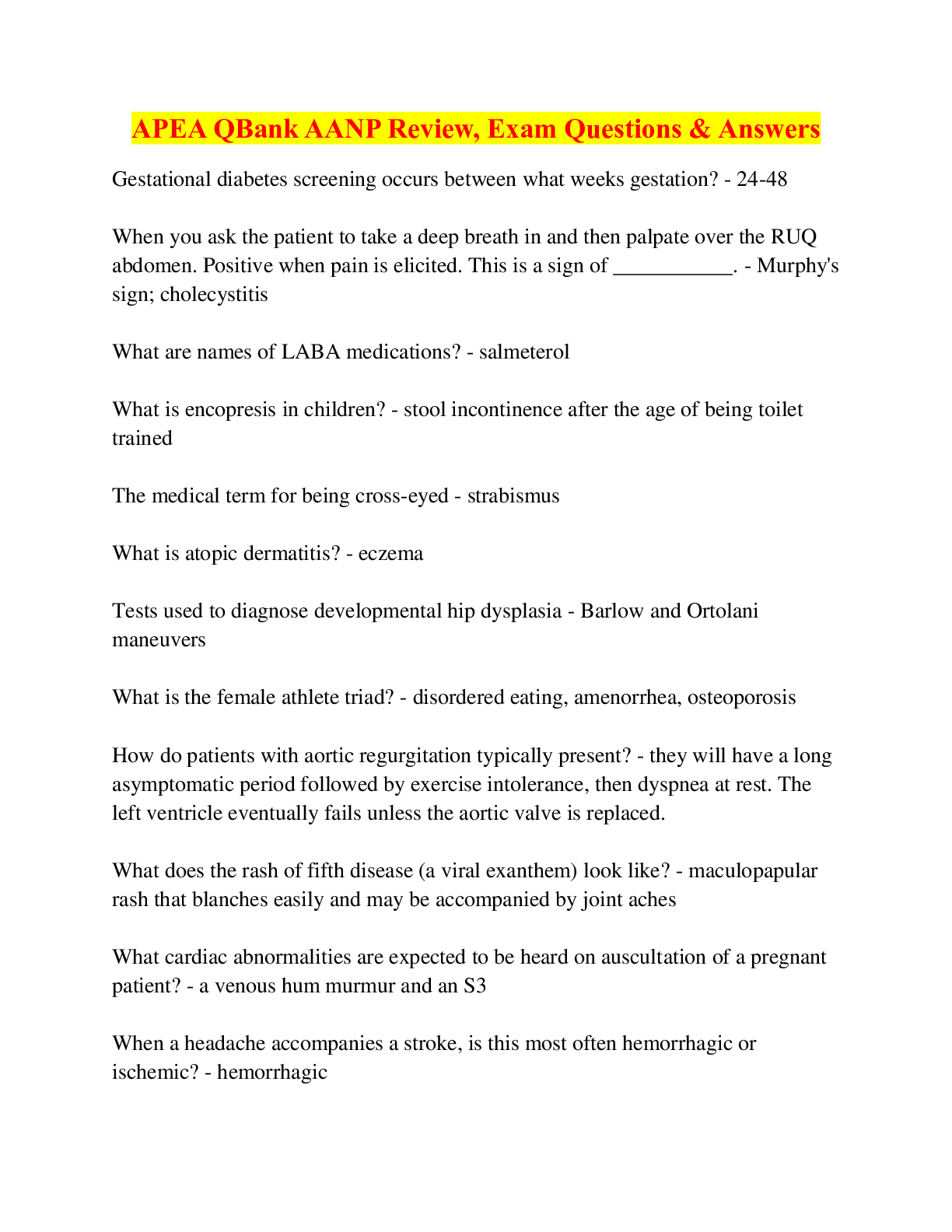
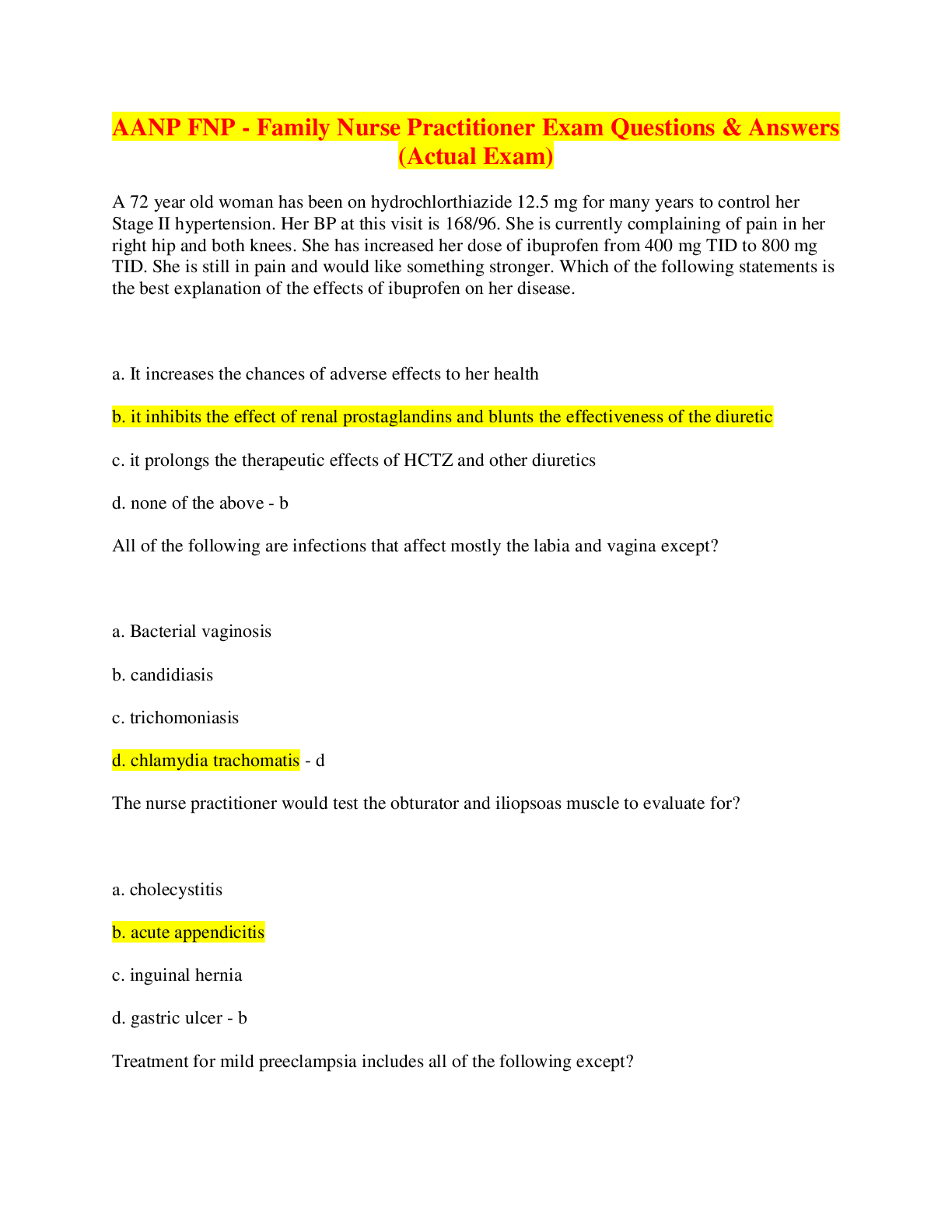
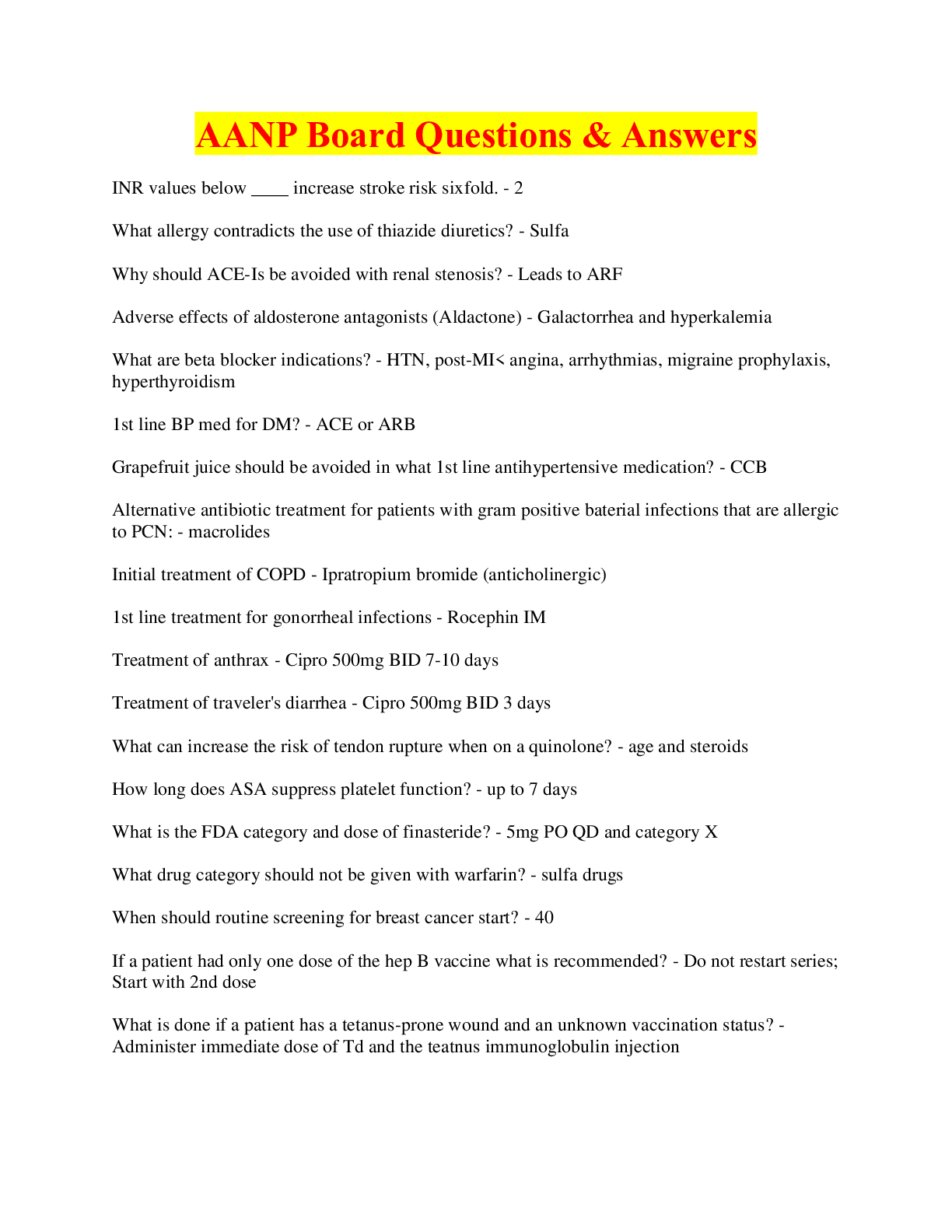

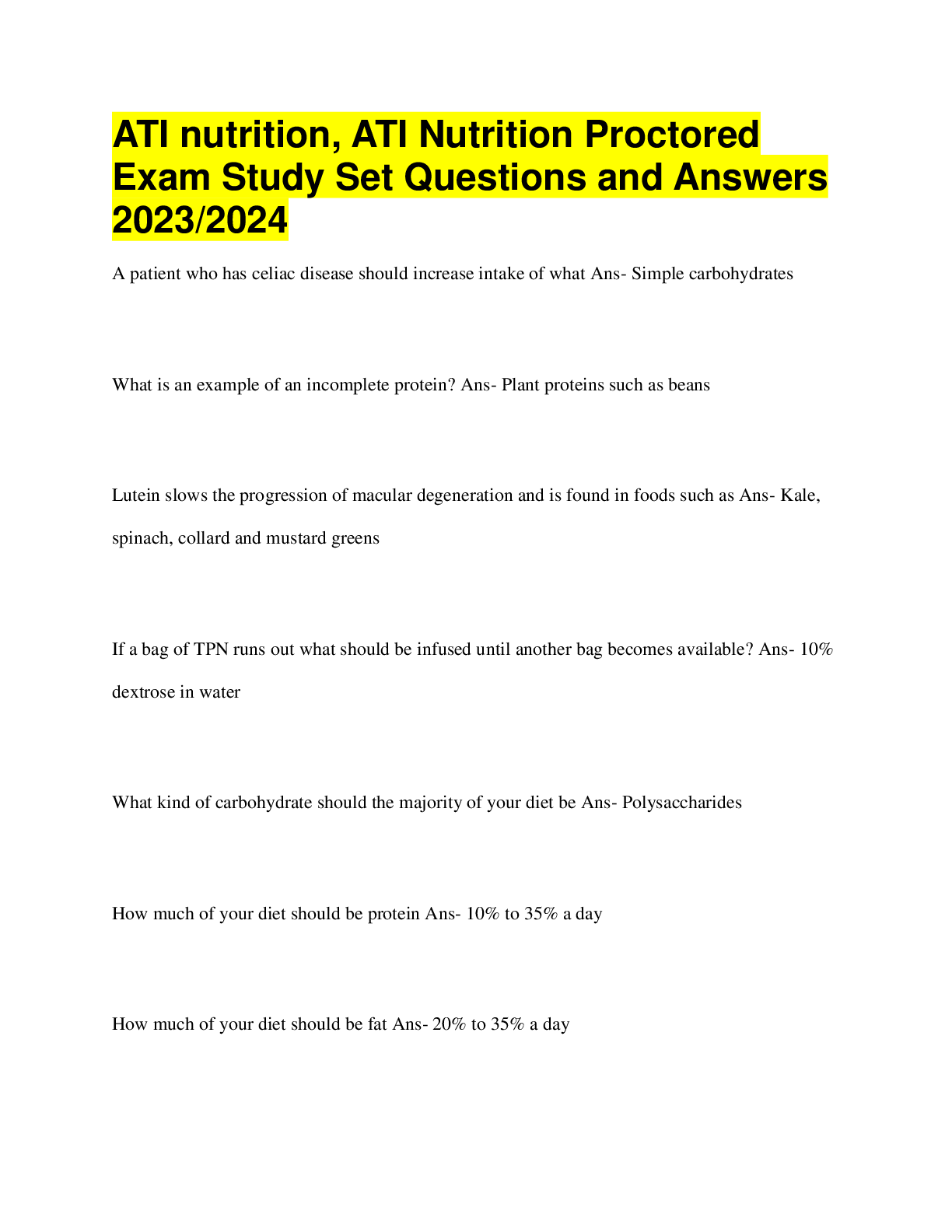
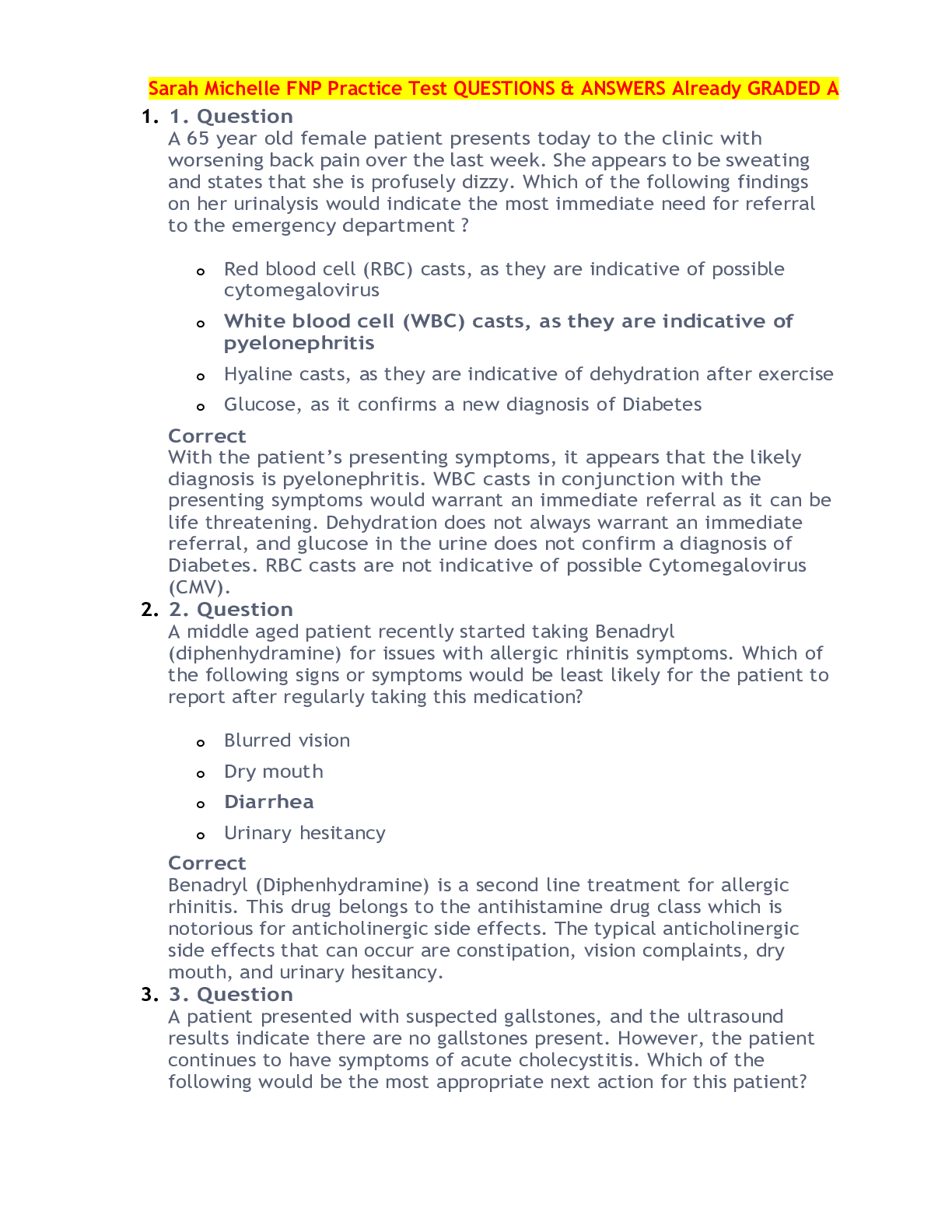
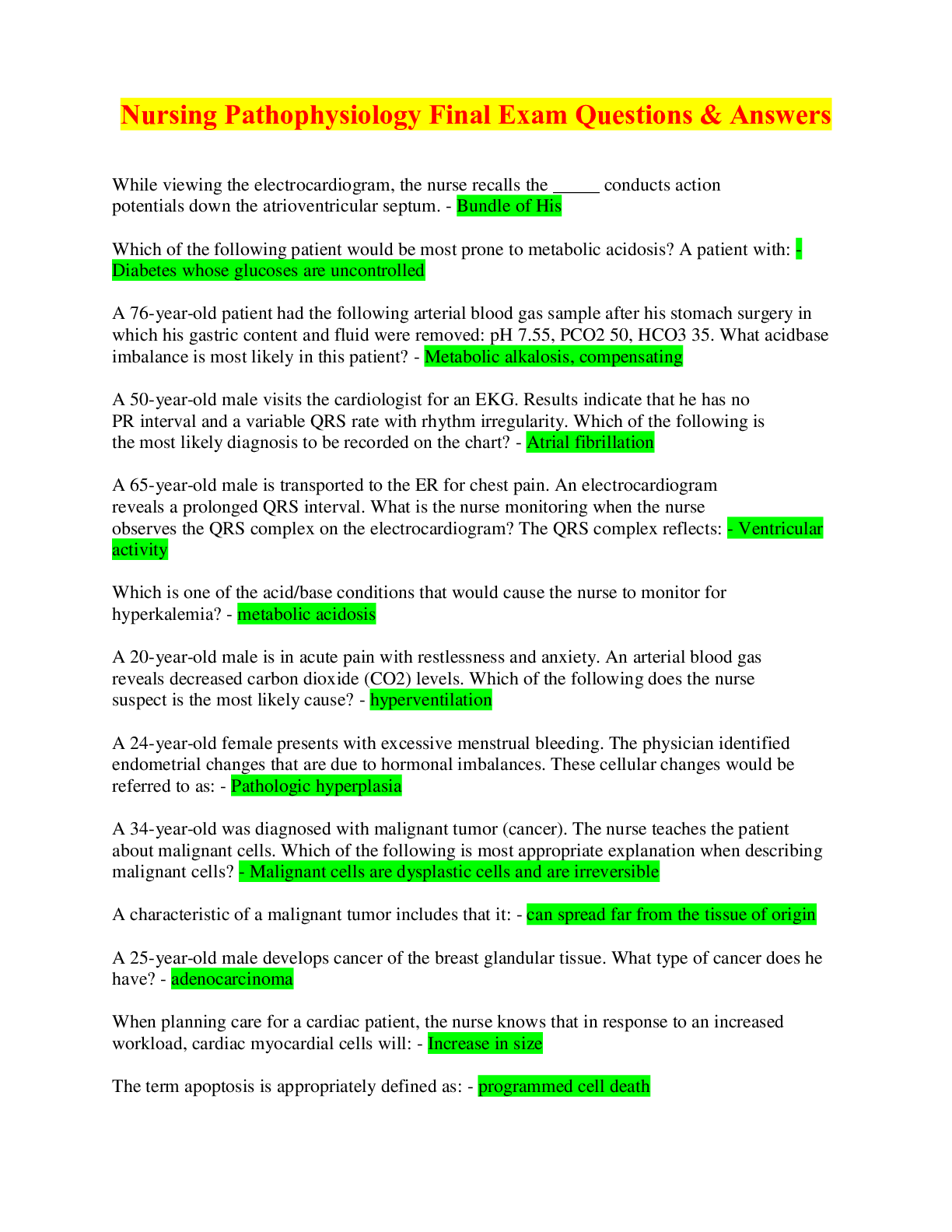
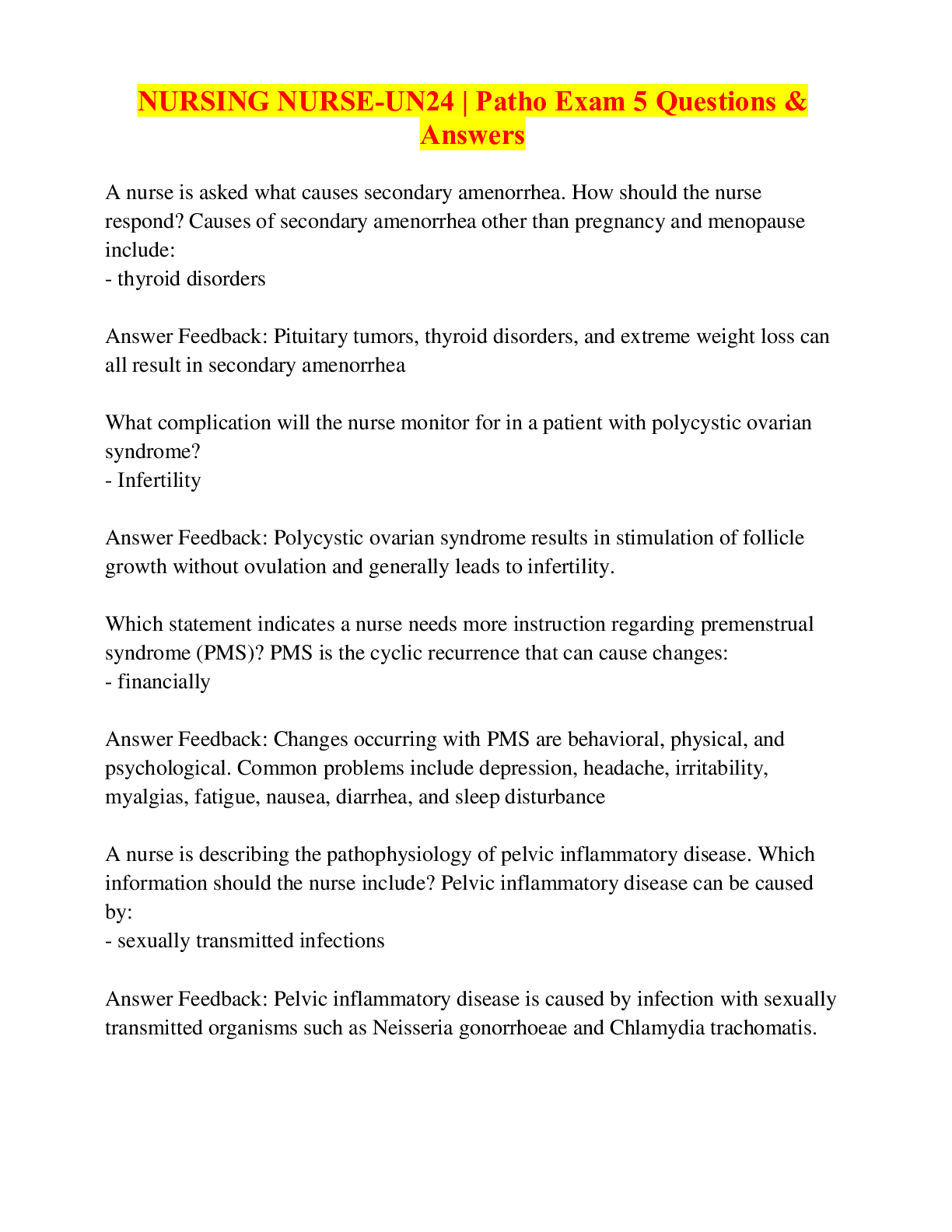

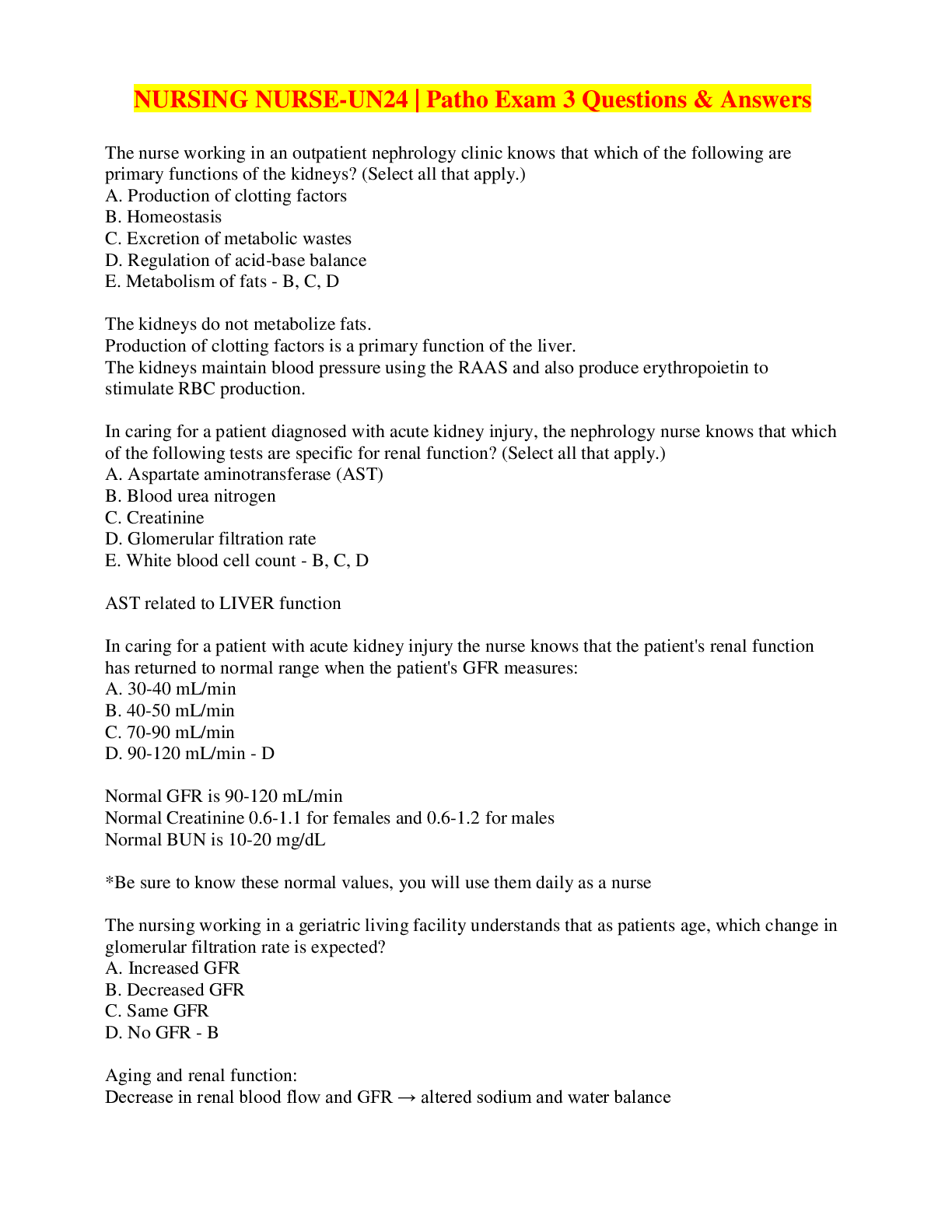
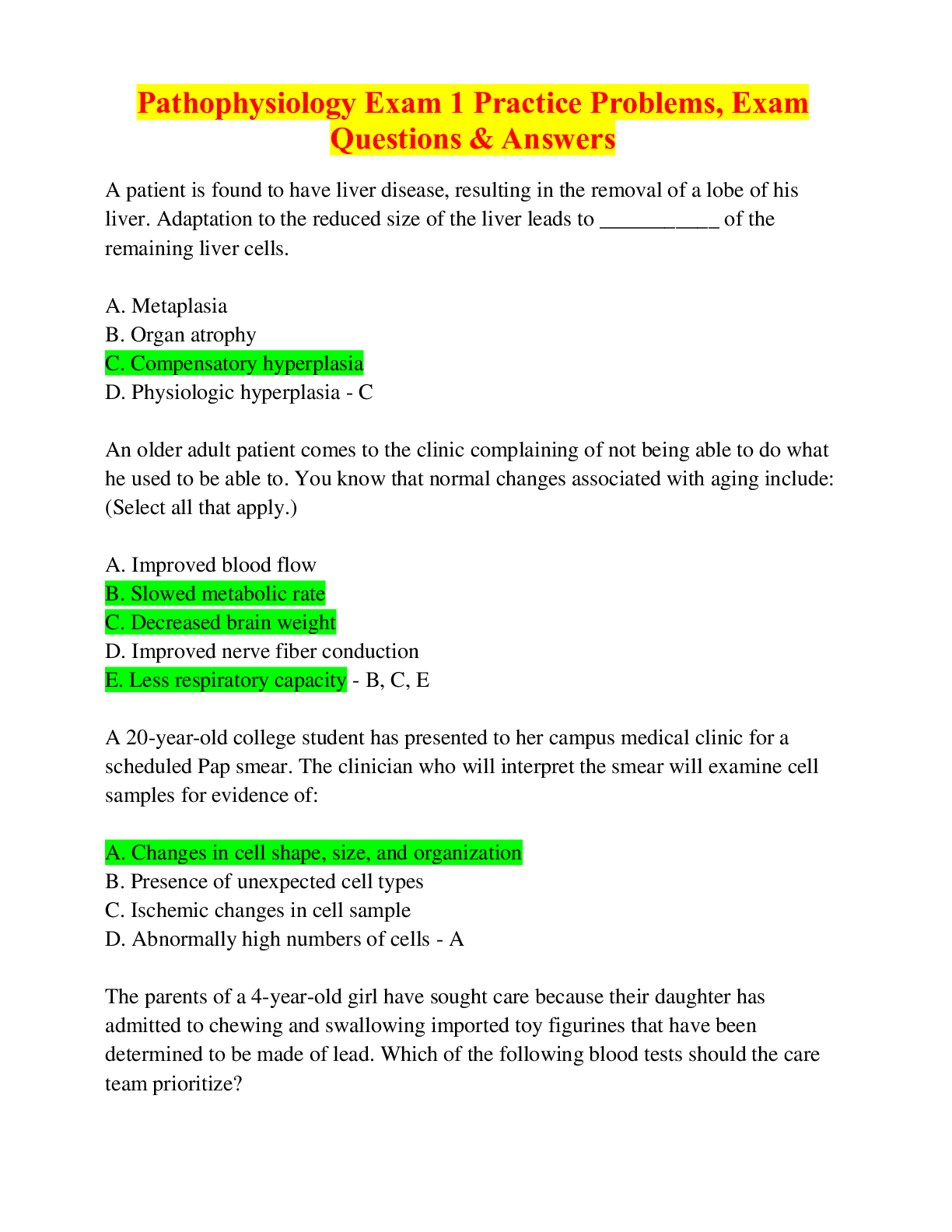
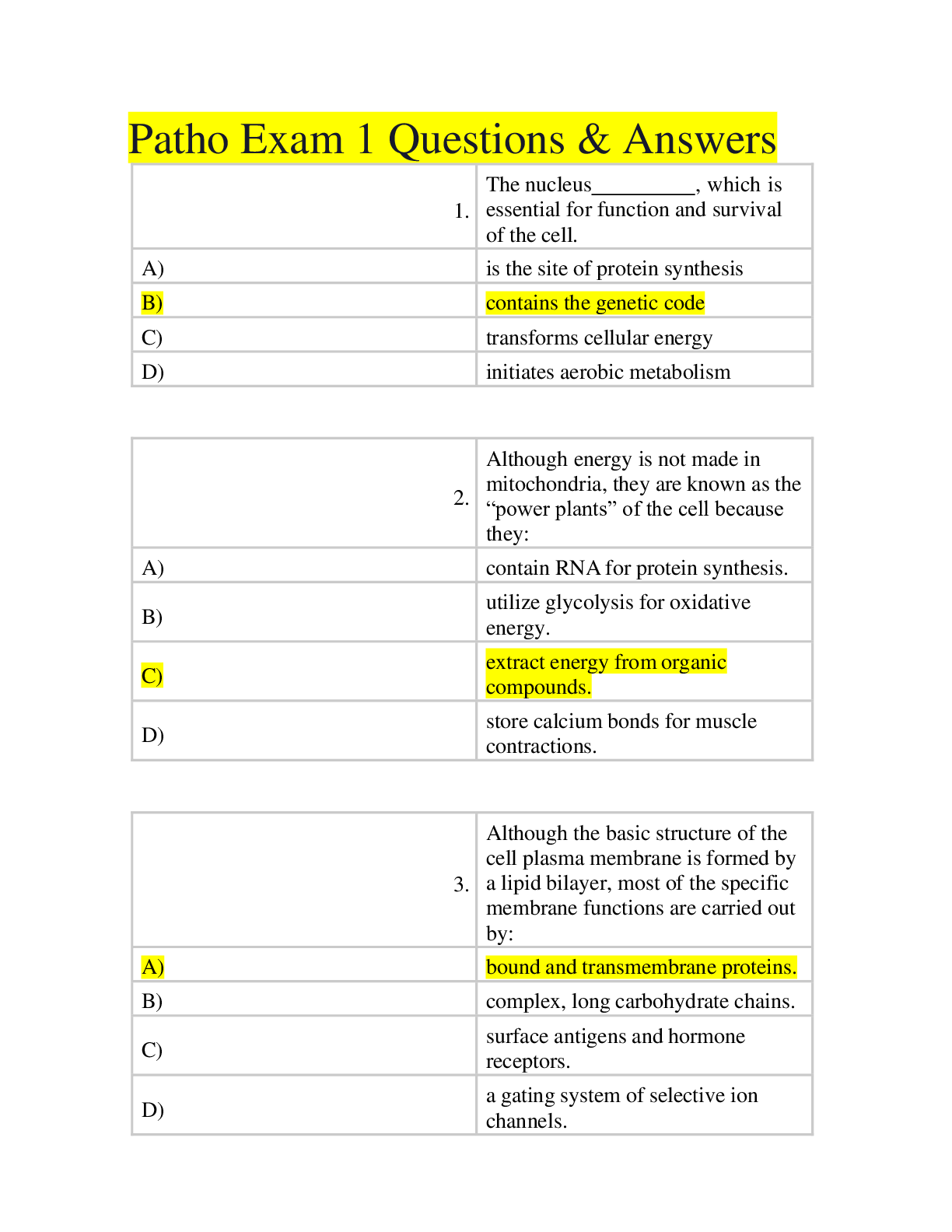






.png)



